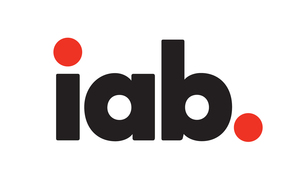Cost Remains a Barrier - Putting Smaller Agencies, Brands, and Publishers at Disadvantage
NEW YORK, Jan. 24, 2023 /PRNewswire/ -- The continuing wave of inconsistent state level privacy legislation, coupled with increased signal loss, has set the stage for data clean rooms (DCRs) to become an indispensable privacy-preserving technology.
However, the significant investments in talent, technology, and data setup required to implement DCRs create significant challenges for smaller agencies, brands, and publishers.
These are among the conclusions from IAB's annual State of Data report from the Measurement, Addressability & Data Center, titled "State of Data 2023: Data Clean Rooms & the Democratization of Data in the Privacy-Centric Ecosystem."
The report, conducted on IAB's behalf by Ipsos, features insights gleaned from over 200 completed surveys and 20 in-depth interviews among data decision-makers at brands, agencies, and publishers/retailers about how privacy-preserving technologies are being managed and activated.
DCR Adoption Investment is Significant
Unveiled during IAB's Annual Leadership Meeting, the report found that DCRs are typically used with other privacy-preserving technology. As a result, compounded annual costs can soar above $2M. For example, while more than 80% of DCR users are using CDPs (customer data platforms) and DMPs (data management platforms), roughly half are using identity solutions and CMPs (consent management platforms).
Investing to Unlock The Next Level of Functionality
"So far, most companies are using DCRs for privacy controls, matching data for collaboration, and data activation," said Jeffrey Bustos, Vice President, Measurement, Addressability & Data, IAB. "But that only scratches the surface of what's possible." Less than a third of users are using DCRs' advanced measurement capabilities, including attribution, return on investment (ROI) / return on ad spend (ROAS) measurement, media or marketing mix modeling, and propensity modeling and predictive analysis.
"Companies expect to invest 29% more in 2023 to make the most of their DCRs, and that's really encouraging," added Bustos. "There is growing demand due to loss of signals, and wanting to share data with partners without sharing sensitive data. This may show that companies are understanding what's required and ramping up their investments accordingly."
Some Growing Pains
The report reveals that while DCRs offer innovative, privacy-preserving capabilities, they are far from being turnkey technology. They require steep and ongoing investments in talent, cost, and setup, spanning everything from data infrastructure and connectivity to onboarding. More than half of DCR users (52%) cite leveraging results / proving ROI as a challenge. About one third of DCR users are also facing data interoperability / customization (39%), internal resource (38%), and privacy (32%) challenges when using DCRs.
- Nearly half of DCR users (49%) have 6+ employees dedicated to the technology—nearly one-third (30%) have a minimum of 11 people.
- Respondents cited time-frames of months to up to two years to get up and running with the technology.
- Nearly two thirds (62%) of users spent a minimum of $200K on the technology in 2022, with a quarter (23%) spending upwards of $500K.
The cost and talent requirements to successfully implement DCRs creates a tremendous market disadvantage for small agencies, brands, and publishers that don't have the resources to invest at those levels—and may weaken the trend toward in-housing.
Calling on All Advertising Participants (including Walled Gardens)
The report also includes detailed information about what advertisers, brands, and publishers need to know as they begin their journey, including hurdles and opportunities for growth; privacy-preserving technology considerations and best practices; and understanding the benefits and use cases of DCRs.
"To make the most of DCRs, the industry needs all data providers to make their data interoperable so that advertisers can measure full campaign effectiveness and ROI," said David Cohen, Chief Executive Officer, IAB. "There should be no exceptions. It's in everyone's interests for closed ecosystems to provide access so that advertisers can effectively analyze their campaign activity. Advertisers need a window into the data."
Through industry collaboration, innovation, and education, IAB and IAB Tech Lab strive to make it easier for advertisers to understand and use DCRs. In Q1, IAB Tech Lab will announce its first DCR specification to support and define interoperable clean room interactions for digital advertising. Developed within IAB Tech Lab's Rearc Addressability Working Group, it will be the first of a library of purpose-built, DCR specifications to support and define interoperable clean room interactions for digital advertising.
For more information, please visit https://iab.com/state-of-data and to download the "State of Data 2023: Data Clean Rooms & the Democratization of Data in the Privacy-Centric Ecosystem," click here.
About IAB
The Interactive Advertising Bureau empowers the media and marketing industries to thrive in the digital economy. Its membership comprises more than 700 leading media companies, brands, agencies, and the technology firms responsible for selling, delivering, and optimizing digital ad marketing campaigns. The trade group fields critical research on interactive advertising, while also educating brands, agencies, and the wider business community on the importance of digital marketing. In affiliation with the IAB Tech Lab, IAB develops technical standards and solutions. IAB is committed to professional development and elevating the knowledge, skills, expertise, and diversity of the workforce across the industry. Through the work of its public policy office in Washington, D.C., the trade association advocates for its members and promotes the value of the interactive advertising industry to legislators and policymakers. Founded in 1996, IAB is headquartered in New York City.
SOURCE Interactive Advertising Bureau (IAB)

WANT YOUR COMPANY'S NEWS FEATURED ON PRNEWSWIRE.COM?
Newsrooms &
Influencers
Digital Media
Outlets
Journalists
Opted In





Share this article